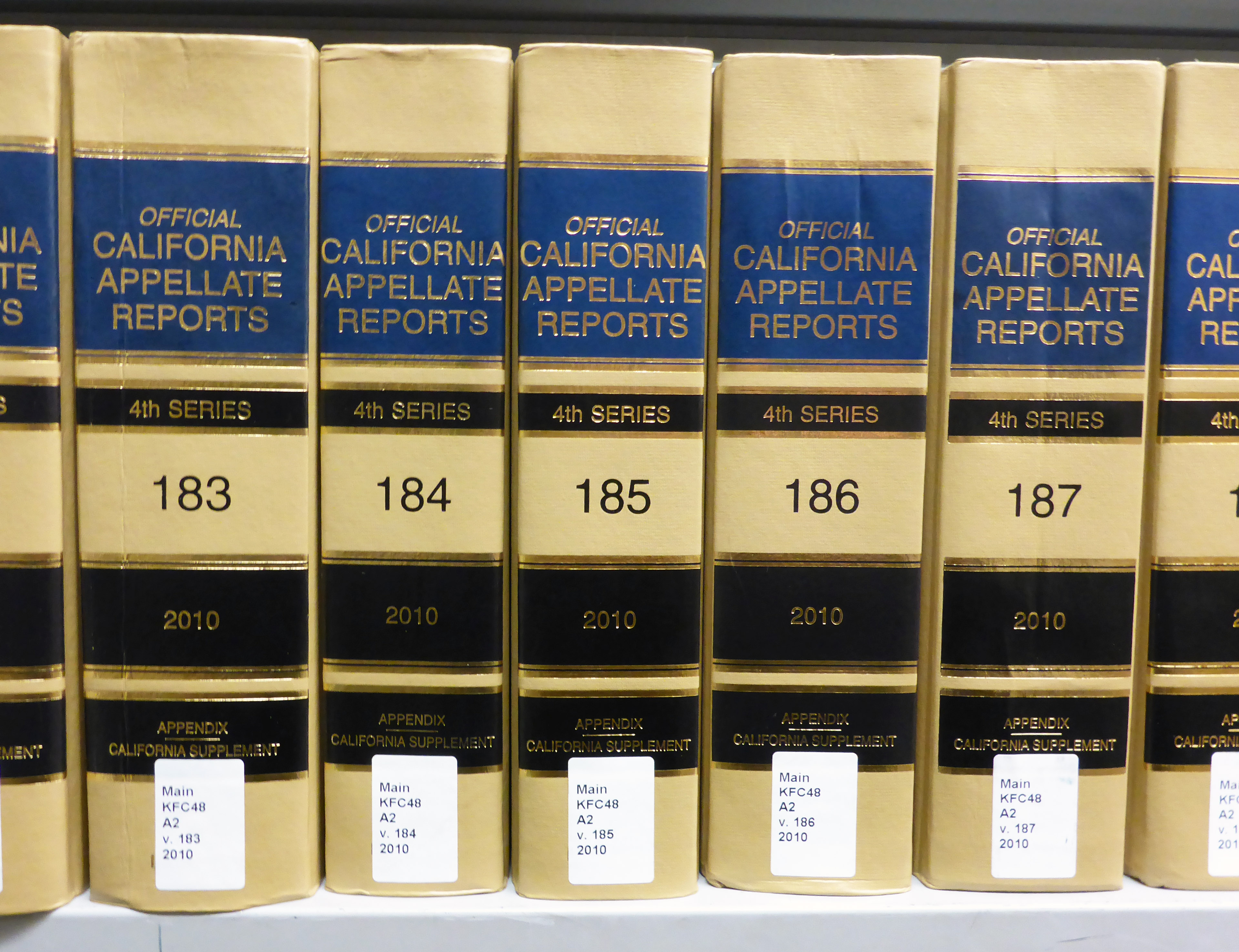|
Peculiar Risk Doctrine
The peculiar risk doctrine is a legal doctrine in the U.S. state of California by which an owner or employer can be held vicariously liable for damages caused by an independent contractor negligently performing his or her work. The doctrine was created "to ensure that innocent third parties injured by the negligence of an independent contractor hired by a landowner to do inherently dangerous work on the land would not have to depend on the contractor's solvency in order to receive compensation for the injuries. Under the peculiar risk doctrine, a person who hires an independent contractor to perform work that is inherently dangerous can be held liable for tort damages when the contractor's negligent performance of the work causes injuries to others" (see Andreini case). There need not be any fault found on the part of the person who hires the independent contractor. Legal cases * Privette v. Superior Court of Santa Clara County, 1993 5 Cal.4th 689 * Andreini v. Superior Court ... [...More Info...] [...Related Items...] OR: [Wikipedia] [Google] [Baidu] |
Legal Doctrine
A legal doctrine is a framework, set of rules, Procedural law, procedural steps, or Test (law), test, often established through precedent in the common law, through which judgments can be determined in a given legal case. For example, a doctrine comes about when a judge makes a ruling where a process is outlined and applied, and allows for it to be Case law, equally applied to like cases. When enough judges make use of the process, it may become established as the ''de facto'' method of deciding like situations. Examples Examples of legal doctrines include: See also * Constitutionalism * Constitutional economics * Concept * Rule according to higher law * Legal fiction * Legal precedent * ''Cogitationis poenam nemo patitur'' * ''Ex aequo et bono'' References External links * *Pierre Schlag and Amy J. Griffin, "How to do Things with Legal Doctrine" (University of Chicago Press 2020) * Emerson H. Tiller and Frank B. Cross,What is Legal Doctrine? " ''Northwestern University ... [...More Info...] [...Related Items...] OR: [Wikipedia] [Google] [Baidu] |
California
California () is a U.S. state, state in the Western United States that lies on the West Coast of the United States, Pacific Coast. It borders Oregon to the north, Nevada and Arizona to the east, and shares Mexico–United States border, an international border with the Mexico, Mexican state of Baja California to the south. With almost 40million residents across an area of , it is the List of states and territories of the United States by population, largest state by population and List of U.S. states and territories by area, third-largest by area. Prior to European colonization of the Americas, European colonization, California was one of the most culturally and linguistically diverse areas in pre-Columbian North America. European exploration in the 16th and 17th centuries led to the colonization by the Spanish Empire. The area became a part of Mexico in 1821, following Mexican War of Independence, its successful war for independence, but Mexican Cession, was ceded to the U ... [...More Info...] [...Related Items...] OR: [Wikipedia] [Google] [Baidu] |
Vicarious Liability
Vicarious liability is a form of a strict, secondary liability that arises under the common law doctrine of agency, '' respondeat superior'', the responsibility of the superior for the acts of their subordinate or, in a broader sense, the responsibility of any third party that had the "right, ability, or duty to control" the activities of a violator. It can be distinguished from contributory liability, another form of secondary liability, which is rooted in the tort theory of enterprise liability because, unlike contributory infringement, knowledge is not an element of vicarious liability. The law has developed the view that some relationships by their nature require the person who engages others to accept responsibility for the wrongdoing of those others. The most important such relationship for practical purposes is that of employer and employee. Employers' liability Employers are vicariously liable, under the '' respondeat superior'' doctrine, for negligent acts or omi ... [...More Info...] [...Related Items...] OR: [Wikipedia] [Google] [Baidu] |
Damages
At common law, damages are a remedy in the form of a monetary award to be paid to a claimant as compensation for loss or injury. To warrant the award, the claimant must show that a breach of duty has caused foreseeable loss. To be recognized at law, the loss must involve damage to property, or mental or physical injury; pure economic loss is rarely recognized for the award of damages. Compensatory damages are further categorized into special damages, which are economic losses such as loss of earnings, property damage and medical expenses, and general damages, which are non-economic damages such as pain and suffering and emotional distress. Rather than being compensatory, at common law damages may instead be nominal, contemptuous or exemplary. History Among the Saxons, a monetary value called a '' weregild'' was assigned to every human being and every piece of property in the Salic Code. If property was stolen or someone was injured or killed, the guilty person had to pay th ... [...More Info...] [...Related Items...] OR: [Wikipedia] [Google] [Baidu] |
Negligence
Negligence ( Lat. ''negligentia'') is a failure to exercise appropriate care expected to be exercised in similar circumstances. Within the scope of tort law, negligence pertains to harm caused by the violation of a duty of care through a negligent act or failure to act. The concept of negligence is linked to the obligation of individuals to exercise reasonable care in their actions and to consider foreseeable harm that their conduct might cause to other people or property. The elements of a negligence claim include the duty to act or refrain from action, breach of that duty, actual and proximate cause of harm, and damages. Someone who suffers loss caused by another's negligence may be able to sue for damages to compensate for their harm. Such loss may include physical injury, harm to property, psychiatric illness, or economic loss. Elements of negligence claims To successfully pursue a claim of negligence through a lawsuit, a plaintiff must establish the " elements" of neg ... [...More Info...] [...Related Items...] OR: [Wikipedia] [Google] [Baidu] |
Third Party
Third party may refer to: Business * Third-party source, a supplier company not owned by the buyer or seller * Third-party beneficiary, a person who could sue on a contract, despite not being an active party * Third-party insurance, such as a vehicle insurance Politics * Third party (politics), any party contending for votes that failed to outpoll either of its two strongest rivals ** Third Party (British political faction), a conservative British political faction formed in opposition to the French Revolution ** Third party (U.S. politics), a US political term for parties other than the Democrats or Republicans * Third party (SIPO), in Ireland, those who receive political donations but do not run for election Arts and entertainment * 3rd Party, a 1990s American music group * ''Third Party'' (album), by Blue Sky Black Death and Alexander Chen, 2010 * Third Party (DJs), a British DJ duo * '' The Third Party'', a 2016 Filipino romantic comedy drama film * The Third Party (a ... [...More Info...] [...Related Items...] OR: [Wikipedia] [Google] [Baidu] |
Independent Contractor
Employment is a relationship between two parties regulating the provision of paid labour services. Usually based on a contract, one party, the employer, which might be a corporation, a not-for-profit organization, a co-operative, or any other entity, pays the other, the employee, in return for carrying out assigned work. Employees work in return for wages, which can be paid on the basis of an hourly rate, by piecework or an annual salary, depending on the type of work an employee does, the prevailing conditions of the sector and the bargaining power between the parties. Employees in some sectors may receive gratuities, bonus payments or stock options. In some types of employment, employees may receive benefits in addition to payment. Benefits may include health insurance, housing, and disability insurance. Employment is typically governed by employment laws, organization or legal contracts. Employees and employers An employee contributes labour and expertise to a ... [...More Info...] [...Related Items...] OR: [Wikipedia] [Google] [Baidu] |
Damages
At common law, damages are a remedy in the form of a monetary award to be paid to a claimant as compensation for loss or injury. To warrant the award, the claimant must show that a breach of duty has caused foreseeable loss. To be recognized at law, the loss must involve damage to property, or mental or physical injury; pure economic loss is rarely recognized for the award of damages. Compensatory damages are further categorized into special damages, which are economic losses such as loss of earnings, property damage and medical expenses, and general damages, which are non-economic damages such as pain and suffering and emotional distress. Rather than being compensatory, at common law damages may instead be nominal, contemptuous or exemplary. History Among the Saxons, a monetary value called a '' weregild'' was assigned to every human being and every piece of property in the Salic Code. If property was stolen or someone was injured or killed, the guilty person had to pay th ... [...More Info...] [...Related Items...] OR: [Wikipedia] [Google] [Baidu] |
Peculiar Risk Doctrine
The peculiar risk doctrine is a legal doctrine in the U.S. state of California by which an owner or employer can be held vicariously liable for damages caused by an independent contractor negligently performing his or her work. The doctrine was created "to ensure that innocent third parties injured by the negligence of an independent contractor hired by a landowner to do inherently dangerous work on the land would not have to depend on the contractor's solvency in order to receive compensation for the injuries. Under the peculiar risk doctrine, a person who hires an independent contractor to perform work that is inherently dangerous can be held liable for tort damages when the contractor's negligent performance of the work causes injuries to others" (see Andreini case). There need not be any fault found on the part of the person who hires the independent contractor. Legal cases * Privette v. Superior Court of Santa Clara County, 1993 5 Cal.4th 689 * Andreini v. Superior Court ... [...More Info...] [...Related Items...] OR: [Wikipedia] [Google] [Baidu] |
Santa Clara County
Santa Clara County, officially the County of Santa Clara, is the sixth-most populous county in the U.S. state of California, with a population of 1,936,259 as of the 2020 census. Santa Clara County and neighboring San Benito County form the San Jose–Sunnyvale–Santa Clara metropolitan statistical area, which is part of the larger San Jose–San Francisco–Oakland combined statistical area. Santa Clara is the most populous county in the San Francisco Bay Area and in Northern California. The county seat and largest city with a population of 971,233 is San Jose, the 13th-most populous city in the nation, California's third-most populous city, and the most populous city in Northern California. Home to Silicon Valley, Santa Clara County is an economic center for high technology, and had the third-highest gross domestic product (GDP) per capita in the world as of 2015 behind Zürich and Oslo, according to the Brookings Institution. Located on the southern coast of San Fr ... [...More Info...] [...Related Items...] OR: [Wikipedia] [Google] [Baidu] |
San Mateo County
San Mateo County ( ), officially the County of San Mateo, is a county (United States), county located in the U.S. state of California. As of the 2020 United States census, the population was 764,442. Redwood City, California, Redwood City is the county seat, the third-most populated city in the county after Daly City, California, Daly City and San Mateo, California, San Mateo. San Mateo County is included in the San Francisco–Oakland–Berkeley, CA MSA (metropolitan statistical area), Silicon Valley, and is part of the San Francisco Bay Area, the nine counties bordering San Francisco Bay. As of 2020, it has a median household income of $128,091, the List of highest-income counties in the United States, fourth-highest household income of any county in the nation behind Loudoun County, Virginia, Falls Church, Virginia, and Santa Clara County, California. The county covers most of the San Francisco Peninsula. The county is predominantly suburban and is home to many corporate cam ... [...More Info...] [...Related Items...] OR: [Wikipedia] [Google] [Baidu] |
California Court Of Appeal
The California Courts of Appeal are the state intermediate appellate courts in the U.S. state of California. The state is geographically divided along county lines into six appellate districts.California Government Code Sections 69100-69107 The Courts of Appeal form the largest state-level intermediate appellate court system in the United States, with 106 justices. Jurisdiction and responsibility  The decisions of the Courts of Appeal are binding on the
The decisions of the Courts of Appeal are binding on the [...More Info...] [...Related Items...] OR: [Wikipedia] [Google] [Baidu] |



